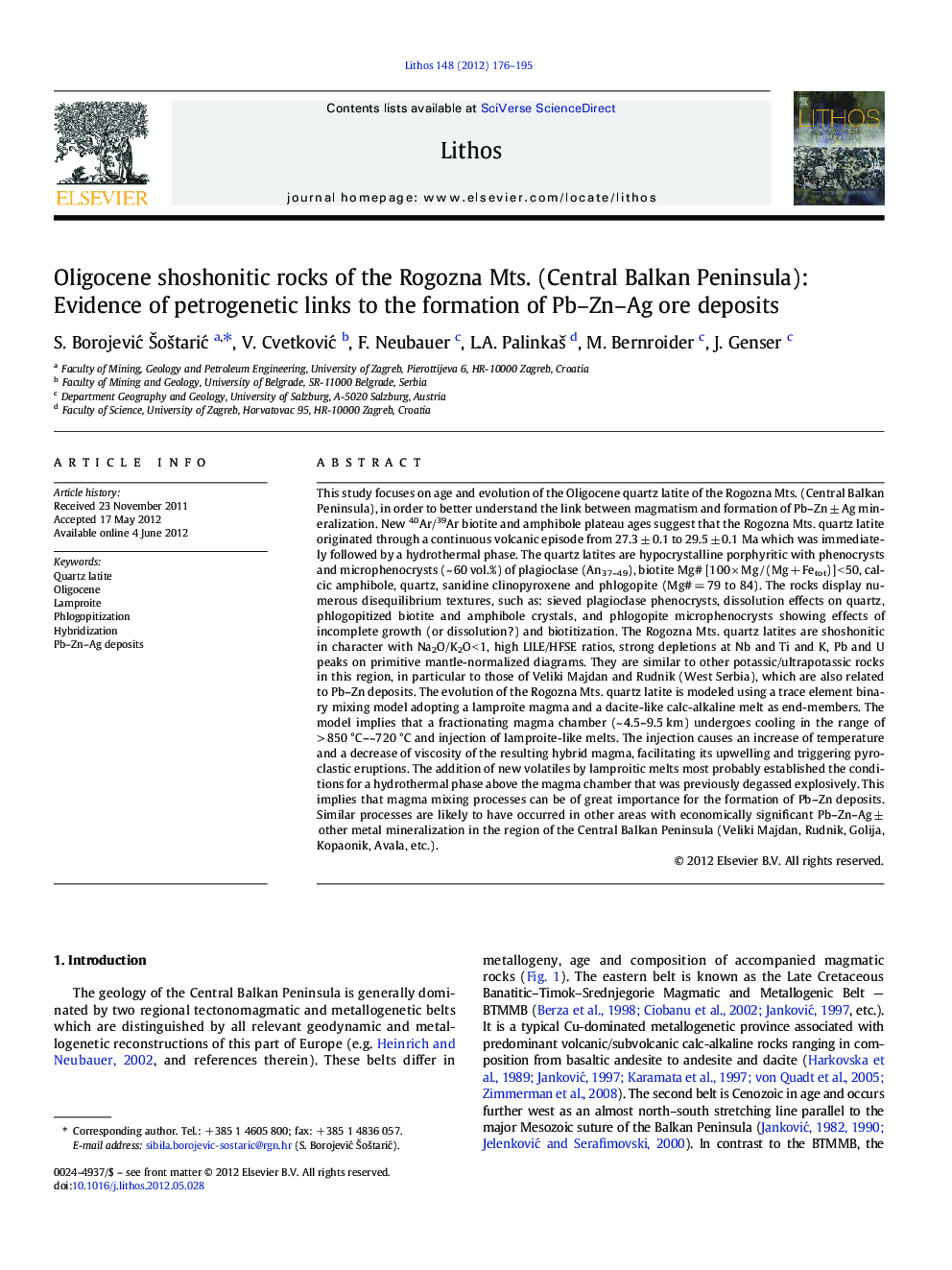| کد مقاله | کد نشریه | سال انتشار | مقاله انگلیسی | نسخه تمام متن |
|---|---|---|---|---|
| 4716550 | 1638705 | 2012 | 20 صفحه PDF | دانلود رایگان |

This study focuses on age and evolution of the Oligocene quartz latite of the Rogozna Mts. (Central Balkan Peninsula), in order to better understand the link between magmatism and formation of Pb–Zn ± Ag mineralization. New 40Ar/39Ar biotite and amphibole plateau ages suggest that the Rogozna Mts. quartz latite originated through a continuous volcanic episode from 27.3 ± 0.1 to 29.5 ± 0.1 Ma which was immediately followed by a hydrothermal phase. The quartz latites are hypocrystalline porphyritic with phenocrysts and microphenocrysts (~ 60 vol.%) of plagioclase (An37–49), biotite Mg# [100 × Mg / (Mg + Fetot)] < 50, calcic amphibole, quartz, sanidine clinopyroxene and phlogopite (Mg# = 79 to 84). The rocks display numerous disequilibrium textures, such as: sieved plagioclase phenocrysts, dissolution effects on quartz, phlogopitized biotite and amphibole crystals, and phlogopite microphenocrysts showing effects of incomplete growth (or dissolution?) and biotitization. The Rogozna Mts. quartz latites are shoshonitic in character with Na2O/K2O < 1, high LILE/HFSE ratios, strong depletions at Nb and Ti and K, Pb and U peaks on primitive mantle-normalized diagrams. They are similar to other potassic/ultrapotassic rocks in this region, in particular to those of Veliki Majdan and Rudnik (West Serbia), which are also related to Pb–Zn deposits. The evolution of the Rogozna Mts. quartz latite is modeled using a trace element binary mixing model adopting a lamproite magma and a dacite-like calc-alkaline melt as end-members. The model implies that a fractionating magma chamber (~ 4.5–9.5 km) undergoes cooling in the range of > 850 °C–~720 °C and injection of lamproite-like melts. The injection causes an increase of temperature and a decrease of viscosity of the resulting hybrid magma, facilitating its upwelling and triggering pyroclastic eruptions. The addition of new volatiles by lamproitic melts most probably established the conditions for a hydrothermal phase above the magma chamber that was previously degassed explosively. This implies that magma mixing processes can be of great importance for the formation of Pb–Zn deposits. Similar processes are likely to have occurred in other areas with economically significant Pb–Zn–Ag ± other metal mineralization in the region of the Central Balkan Peninsula (Veliki Majdan, Rudnik, Golija, Kopaonik, Avala, etc.).
► Rogozna quartz latite formed 27.3 ± 0.1–29.5 ± 0.1 Ma ago from hybridized melts.
► Hybridization originated by mixing of dacite calc-alkaline and K to ultra-K melt.
► Prior to hybridization crystallized amphibole, plagioclase, biotite at 5–10 km.
► Phlogopite and disequilibrium textures formed after injection of K to ultra-K melt.
► Pb–Zn–Ag deposits formed synchronous with quartz latite.
Journal: Lithos - Volume 148, 1 September 2012, Pages 176–195